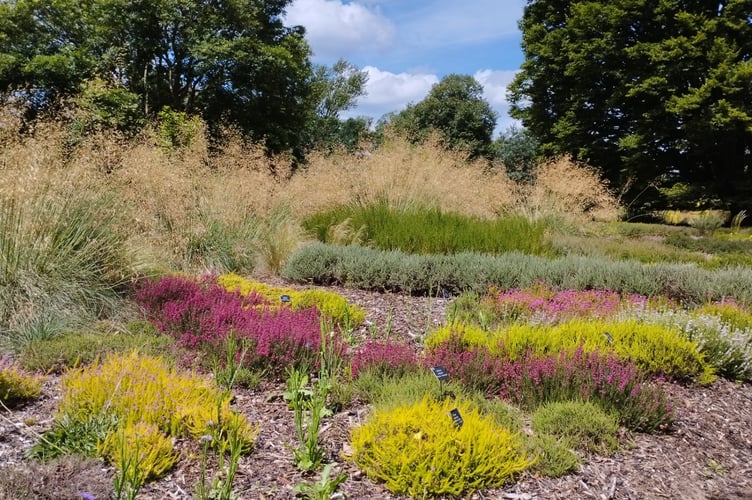
We may have grumbled about a cool, wet spring and summer, but it has been good for the plants! Tim Upson, RHS Director of Gardens & Horticulture, said: “Whilst the summer has been frustratingly wet for many of us this has made ideal flowering conditions for late summer plants.”
The RHS says flowers are set to bloom for longer this autumn following “a cloudy and wet summer with warm intervals”. It says this has benefited the displays at its flagship garden, RHS Garden Wisley.
Many plants were slow to establish this year, but wetter than usual weather has meant plants haven’t been drought or temperature stressed, so able to put their energy into prolonged flowering.
Meanwhile, recent warm spells followed by rain have brought on early flowering autumn bulbs such as autumn crocuses and cyclamen, providing extra splashes of colour alongside late summer favourites such as sunflowers, crocosmia and asters.
Tim said dahlias too have benefited from the weather. If you’re visiting RHS Garden Wisley soon, there are spectacular displays of dahlias in the Trials Garden, boasting 97 varieties of the plant. The National Dahlia Society’s annual competition was held last week as part of the RHS Garden Wisley Flower Show: dahlia growers competed in over 100 classes from Tuesday to Thursday, displaying over 5,000 blooms.
It was followed on Saturday and Sunday by the RHS open competition, when the public could show their garden dahlias for judging.
The RHS gardeners said the changeable weather has benefited the Oudolf Landscape. This area, redesigned by world-famous Dutch garden designer Piet Oudolf and planted over the past year or so, has established magnificently thanks to wet summer weather, with its 31,000 perennials providing colour and texture.
The highlight of my most recent visit – a gloriously sunny summer day – was to wander around the Pinetum and its neighbour, Howard’s Field. It seems many garden visitors overlook these areas at the northern end of the garden, so they were tranquil despite hordes elsewhere.
The Pinetum – mostly conifers – is the oldest tree collection at Wisley. Some of the oldest Pinus nigra (black pines) were planted by the original site owner George Fergusson Wilson in the 19th century. The RHS continued in this vein: the magnificent redwood trees at the entrance were early RHS plantings, probably made around 1904, just after it acquired the garden. The tallest tree here is the Sequoia sempervirens (Coastal Redwood). Look out too for the magnificent variegated “Zebrina Western Red Cedar” with a huge pyramid of zebra like, striped foliage.
The Pinetum is magnificent all year round, but especially in autumn when the evergreen conifers contrast beautifully with the accompanying deciduous plants.
Howard’s Field is predominately a quiet, contemplative clearing, housing the National Plant Collection of heathers and an ornamental grass garden. The heather landscape has around 25,000 heathers including 900 cultivars, 162 of which are considered endangered.
It features ribbons of contrasting colours with unusual companions including Yucca shrubs and globe artichokes, as well as ornamental grasses moved from Seven Acres.
Howard’s Field also has some unusual trees, such as birch, Indian bean tree, cherry and an impressive copse of a German form of Scots pine, selected for its very fine orange bark.
It’s raining even I as write, but sunny days are sure to arrive sometime this month when, all things considered, RHS Garden Wisley will be well worth visiting!




